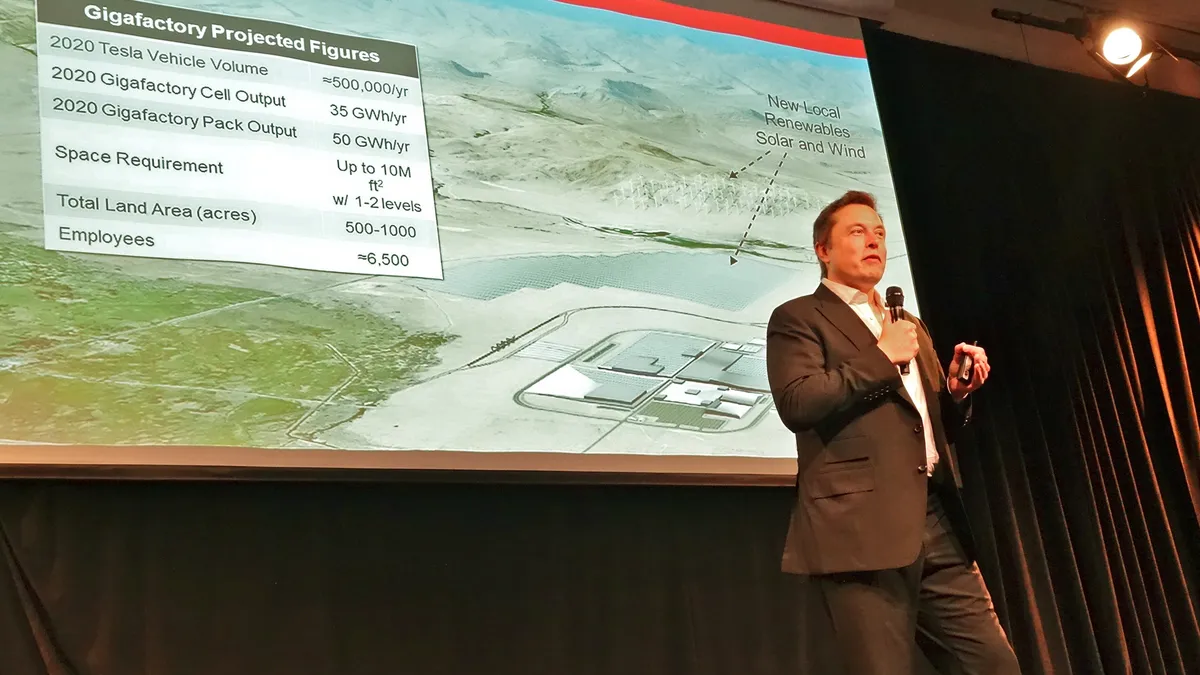Dive Brief:
- Tesla released additional information about its proposed acquisition of SolarCity on Tuesday, saying both companies are financially healthy and that the merger would add to Tesla's balance sheet as soon as this quarter.
- The release comes after some analysts critiqued the merger, saying it was a bailout for the installer, whose business model has relied on hefty debt financing to support its model of no-upfront-cost solar leases. And it follows the unveiling of Tesla's new solar roof, a product contingent upon merger approval.
- SolarCity is no longer reliant on that model of financing, Tesla said, and the combined company's solar-plus-storage offerings will provide "hedge for customers against future changes to net metering," according to the post.
Dive Insight:
When Tesla announced it would buy SolarCity in June, one of the first questions from analysts was how the business model of the largest U.S. solar installer would affect Tesla's bottom line.
For years, SolarCity built its market share by offering no-upfront-cost solar loans to customers and recovering the revenue through power purchase agreements over time. But as the solar sector moves from the lease model to loans and direct ownership, Tesla says that the company is "no longer reliant on leasing."
"[SolarCity] customers are increasingly choosing to opt for cash purchases and loans, which creates a healthier mix of upfront and recurring revenue," the company wrote.
That trend helped SolarCity increase its cash balance from the second to third quarters of this year, meaning that Tesla expects a merger could actually add to its cash flow in the fourth quarter.
That assessment of merger's finances stand in stark contrast with some outside perspectives. Last month, one Oppenheimer analyst predicted Tesla would need to raise $12.5 billion through 2018 to fund the merger, and an S&P analyst told Bloomberg that SolarCity's debt load makes it "one bad economic downturn away from going belly-up."
Tesla sought to assuage any of those concerns among its shareholders by emphasizing that its $5.2 billion in solar assets "significantly exceed" its debt, and that existing PPA agreements are expected to net $8 billion for the company in the next 20 years.
More than half of SolarCity's debt is "non-recourse," Tesla added, meaning that "even if SolarCity were to default on it, only the secured collateral is at risk and SolarCity would not have any additional liability."
Changes to state solar policy have also been a worry for SolarCity, whose PPAs rely on retail rate net metering that prevails in most states. But Tesla said that new solar-plus-storage offerings from a combined entity would help insulate both customers and the company from policy changes.
"A combination of Tesla and SolarCity will create a tightly integrated solar and battery combination that will provide grid-independent, renewable backup power today, and a hedge for customers against future changes to net metering," Tesla wrote.
The new offerings will also enhance "opportunity for the combined company to sell grid services into the $50 billion per year distribution and transmission market."
Whether the new information will quiet shareholder anxieties remains to be seen. No new price or performance information was released on any Tesla products, meaning those with persisting questions about solar panel efficiency or battery degradation rates may need to decide on the merger without those product details.
Shareholders are slated to vote on the merger Nov. 17.
The company held a live Q&A webcast with executives on Tuesday to answer questions from analysts, but no further product details were revealed. The recording is here.














